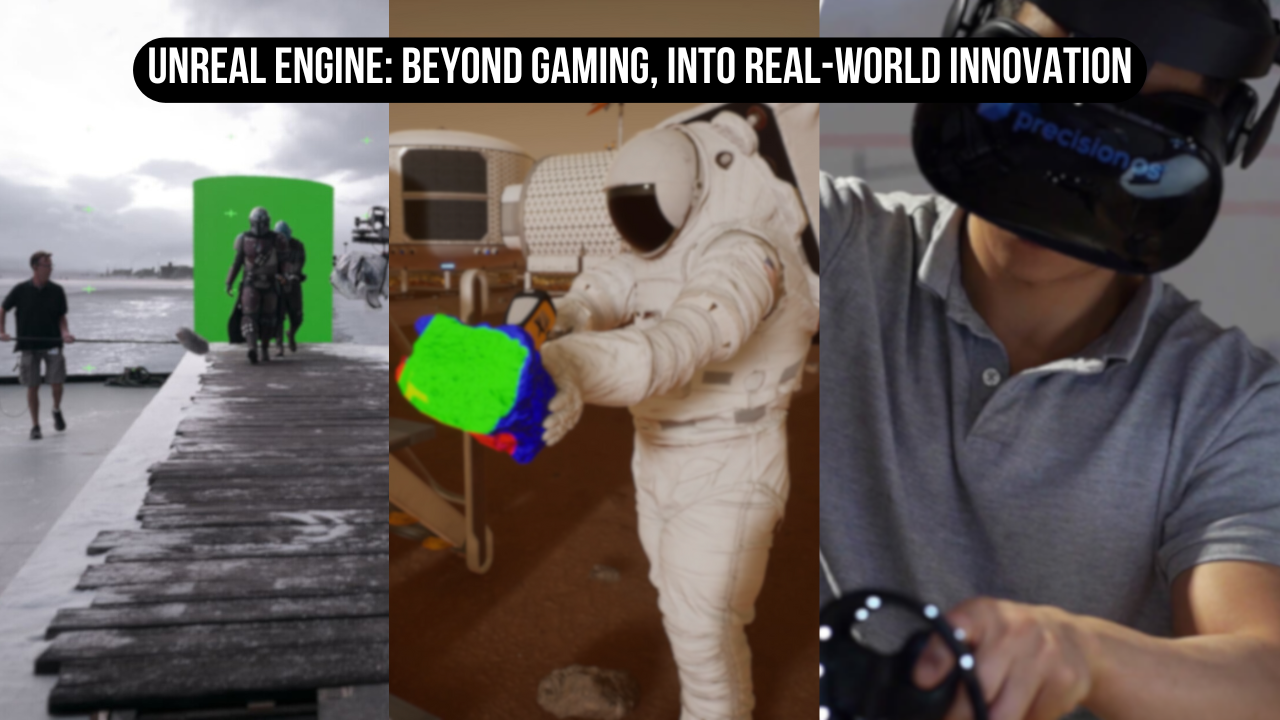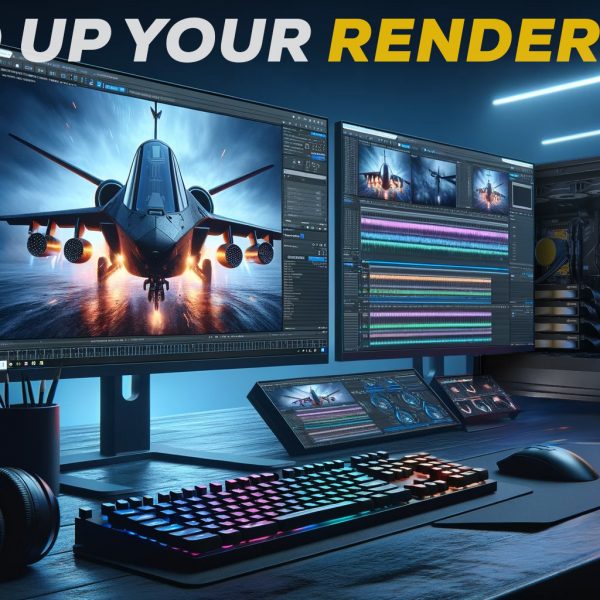When you think of Unreal Engine, the first thing that probably comes to mind is gaming. After all, it’s the powerhouse behind Fortnite and BGMI. But what if we told you that Unreal Engine is much more than just a game engine? In fact, it’s become a critical tool for industries like filmmaking, architecture, medicine, and even space exploration.
Let’s break down what Unreal Engine can really do—and why it’s everywhere.
The Roots of Unreal Engine: Gaming
Unreal Engine started its journey as the foundation for video games. It’s free to use until you hit $1 million in revenue, making it a go-to for indie developers. Here’s what Unreal brings to the table for game creators:
- Photorealistic Graphics: Powered by technologies like Nanite and Lumen, Unreal enables breathtaking visuals that rival real-life imagery.
- Cross-Platform Support: Whether you’re creating for PC, consoles, or mobile devices, Unreal has you covered.
- Blueprints: A visual scripting tool, this allows even beginners to build complex game mechanics without needing to code.
This combination of high-end tools and accessibility has made Unreal Engine the choice of over 7.5 million developers worldwide, making it a leader in the gaming world.
Unreal Engine’s Leap into Film and Virtual Production
While Unreal Engine has deep roots in gaming, its real-time rendering capabilities have opened new doors in filmmaking. Traditionally, films would rely on green screens and post-production to composite environments. But with Unreal, directors can now see the final shot in real-time, which changes everything.
The Mandalorian, for instance. The show replaced green screens with massive LED walls powered by Unreal Engine. This means that instead of relying on post-production to add in backgrounds, actors can perform in front of dynamic, photorealistic environments. What’s the result? Faster production times, reduced costs, and more creative flexibility for filmmakers.
Westworld also used Unreal for interactive environments. The show could instantly render and modify the scenes, giving directors and actors a better understanding of the virtual world they were creating. This shift is drastically changing how films are made, reducing long rendering times and allowing directors to see the final product immediately.
A Game-Changer for Architecture: 3D Visualization
Unreal Engine isn’t just for games or films anymore—it’s a game-changer for industries like architecture. Traditional blueprints and static designs often leave clients struggling to envision what a final project will look like. But with Unreal, architects can create interactive 3D visualizations, giving clients a walk-through experience before construction even begins.
For example, the iconic Apple Park campus was designed using Unreal by Foster + Partners. Zaha Hadid Architects also relied on Unreal to visualize the Beijing Daxing Airport. Instead of relying on paper blueprints, clients get a VR tour of their future buildings, which leads to fewer design changes, faster approvals, and ultimately happier clients.
Unreal Engine’s Role in Simulations: NASA, Ford, and Medicine
Where Unreal really shines is in its physics engine—this is why industries like NASA, Ford, and healthcare have adopted it for training and simulations.
NASA: The space agency uses Unreal to simulate Mars landings. The accuracy and flexibility of the Unreal physics engine allow NASA to test complex scenarios in a safe, virtual environment before any physical missions take place. From rover operations to lander behavior, Unreal helps scientists predict and plan for real-world conditions.
Ford: Virtual crash tests are a crucial part of Ford’s vehicle design process. Unreal allows the company to simulate real-world crash scenarios to test safety features before building physical prototypes. This results in safer vehicles and a much faster development cycle.
Healthcare: Hospitals have turned to Unreal Engine for VR simulations to train surgeons. Instead of risking patient safety in early training stages, medical professionals can practice delicate surgeries in a highly realistic virtual environment. This not only enhances training but also improves the precision and safety of real-world procedures.
In all these industries, Unreal Engine allows companies to test, tweak, and innovate without the risks and costs associated with physical prototypes or real-world trials. The result? Safer, faster, and cheaper innovation.
The Future of Unreal Engine
What started as a game engine has now evolved into a versatile tool with applications across multiple industries. Unreal Engine’s real-time rendering, 3D visualization, and cutting-edge physics engine have made it indispensable for film production, architecture, medical training, and even space exploration.
The next time you hear about Fortnite or Gears of War, remember that Unreal Engine is far more than a gaming platform. It’s the backbone of innovation in industries that shape our world—and our future.






